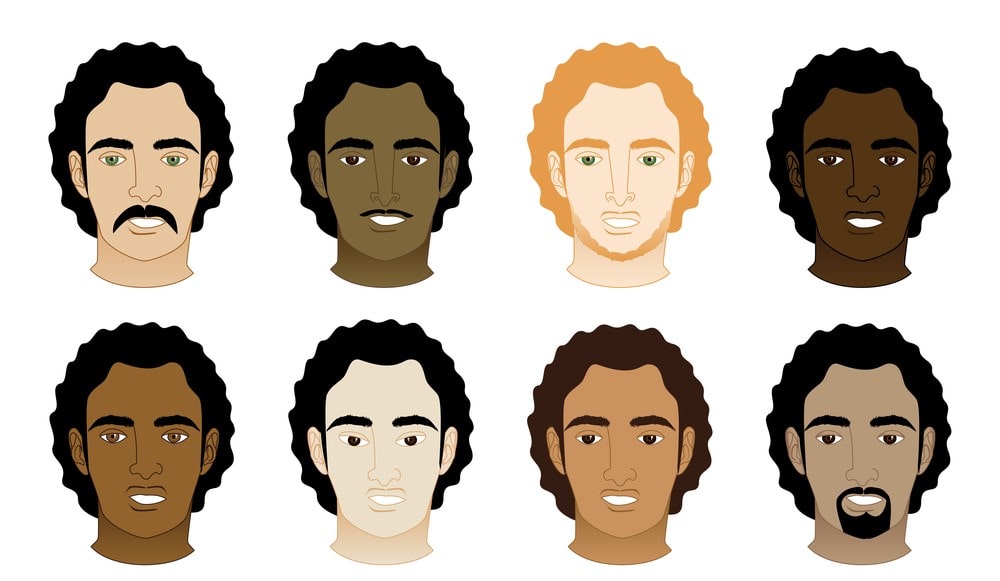

Ethnic hair transplants are hair transplants performed on non-Caucasians to restore the shape, density and appearance of the hairline without compromising the ethnic identity of the patient. Ethnic hair transplantation keeps the overall aesthetic of the patient’s scalp in mind while considering the unique follicular growth pattern and structure in order to achieve the look desired by the patient. Since some ethnicities have coarser, curlier and kinkier hair, the surgeon must consider these factors. By transplanting new hairs with these factors in mind, the results will maintain harmony among the facial features and appear more balanced.
A good candidate for ethnic hair transplantation is anyone with obvious ethnic features who is dissatisfied with the shape, density or appearance of their hair. Ethnic hair transplant patients can include:
GOOD CANDIDATES for ethnic hair transplantation are:
Patients who are NOT GOOD CANDIDATES include:
Ethnic patients like African Americans often have very curly hair, which can be both very beneficial for hair transplantation and very difficult to execute. It can be beneficial because although there is typically a lower density of follicular units in the area from which hair will be removed in order to transfer it to the regions of hair loss, the texture and curliness of the hair can ultimately enhance coverage and occupy a larger area of the scalp. It can be difficult to execute because the unique features of ethnic follicles require specialized experience and a highly technical approach to donor harvesting. The curling and growth pattern of African American hair, for example, presents a particular challenge to non-ethnic hair transplant surgeon because the extraction of the follicle needs to accommodate the curl under the skin. Ethnic hair transplantation requires a distinct set of surgical skills and a keen insight of various cultures.
The hair transplant candidate should also be evaluated in terms of local anesthesia as well as bleeding disorders.
Ethnic hair transplants are typically classed under two types:
The FUE and Strip surgeries are minimally invasive outpatient procedures performed under local anesthesia. Hair transplant surgery uses a patient’s own natural DHT-resistant terminal hairs to restore the thinning or balding areas on the scalp.
With the FUE procedure, hair follicles are removed one-by-one from the donor site, then transplanted individually to the thinning or balding areas of the temple or crown. If done by a master specialist, this method leaves no visible linear scar.
With the FUT or strip method, a thin strip of scalp is removed from the back of the head containing numerous hair follicles. These follicles are then transplanted one-by-one into the balding area. This method leaves a very thin linear scar at the back of the head which is rendered non-visible once the hair grows back.
A hair transplant will normally take five to eight hours to perform.
The cost for a hair transplant on an ethnic patient is usually the same as that of a non-ethnic patient. Both FUE and FUT ethnic procedure prices vary depending on grafts needed, desired density, the size of the balding area, surgeon skill and the geographical location where the surgery will be performed. The standard range of price is between $4,000 and $15,000.
The RECOVERY time for ethnic hair transplant patients is very minimal. Most patients may resume normal activity within a day or two.
Beyond this, there is no significant DOWNTIME to be observed. Tiny crusts will form where the transplants have been placed and usually shed within four to seven days. The small hairs in the newly transplanted grafts normally shed within two to four weeks after the procedure, and permanent hair growth begins in eight to 12 weeks.
Ethnic hair transplant patients should expect significant cosmetic hair growth within six months and full hair growth within nine to 12 months. Only one or two procedures are usually enough to treat a specific area of hair loss. Potential future hair loss is taken into account when any hairline work is performed. The initial consultation between the patient and surgeon helps to individualize the procedure to the patient’s hair quality and density, as well as their expectations. The final results of FUE and FUT should be permanent.
Ethnic hair transplantation provides physical benefits as well as psychological benefits. People who are dissatisfied with the shape or thinness of their hairline often feel self-conscious about their appearance which can cause low self-esteem. After the surgery, many patients report a significant boost in confidence.
Some of the limitations of ethnic hair transplantation include:
Some of the risks of ethnic hair tranRisks of Ethnic Hair Transplantationsplantation include:
To minimize risks and complications, patients should follow all of their doctor’s pre-surgical and post-surgical instructions. The restrictions set by the surgeon will help minimize discomfort and speed the healing process.
It is of the utmost importance to conduct thorough research and find an experienced and technically advanced ethnic hair restoration specialist to diagnose and treat your hair loss condition. A veteran hair transplant physician or surgeon will be able to accurately assess and evaluate your individual dermatological needs, and provide the best solution for you.